|
106. Melitaea diamina (Lang, 1789) / False heath fritillary / Nymphalidae – Melitaeinae
NL: donkere melitea, woudparelmoervlinder / D: Silberscheckenfalter, Balderian-Scheckenfalter / F: damier noir
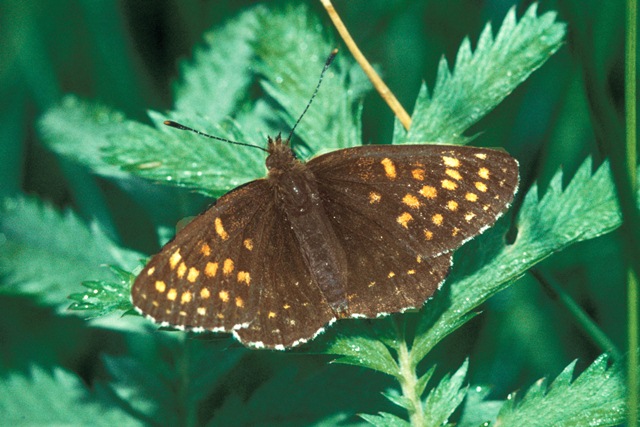 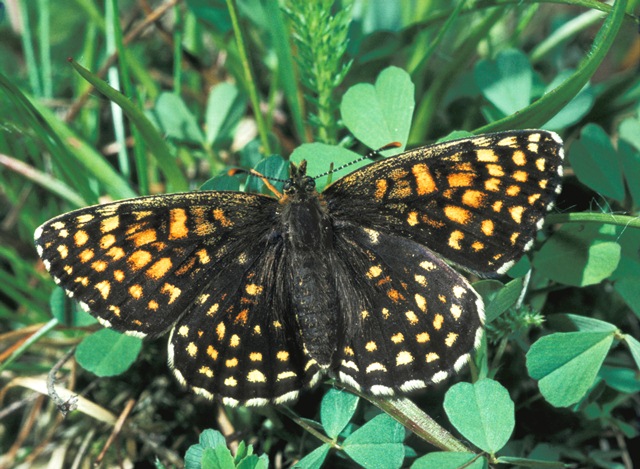 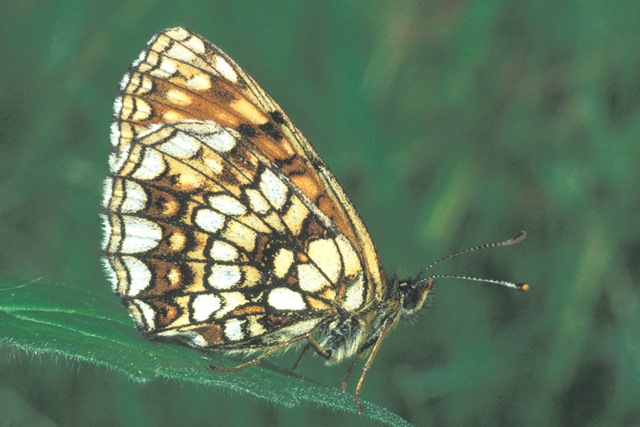
Photographs: Frits Bink ©.
Small or medium-sized, wing length 18 (16-21) mm. In the Benelux the species is present in Luxemburg and Wallonia, it disappeared from the Netherlands around 1961 and from Flanders around 1954 (Maes & Van Dyck 1999: 310-311).
Butterfly is on the wing from end-May until mid-July and peaks mid-June. The species is known from sub-continental climate to severe continental, amplitude 8 to 20. Required heat sum 600°d, maximum tolerated 1800°d, corresponding climate windows 22 and 35 weeks.
The disappearance from the Netherlands is not easily explained since its habitat is quite a general one, tall herb vegetation on a swampy site. This type of environment is still quite common and the spatial requirement of the species is very modest.
Ecological characteristics
Behaviour over time
Overwintering: small larva in a community in a big silken nest in litter layer.
Reproduction: oviposition starts after 4-6 days when the body contains 194 (166-222) eggs, estimated production 1.2 times as much.
Larval feeding periods: in summer about 20 days in the period from end-July until early-September, in next spring 46 (35-51) days from mid-April until mid-June.
Generations: one.
Spreading of risk: in breeding experiment 10% repeated diapause.
Life cycle: egg 10-20 days; larva 47 or 99 weeks; pupa about 21 days.
Life span of adult: short, 2 weeks.
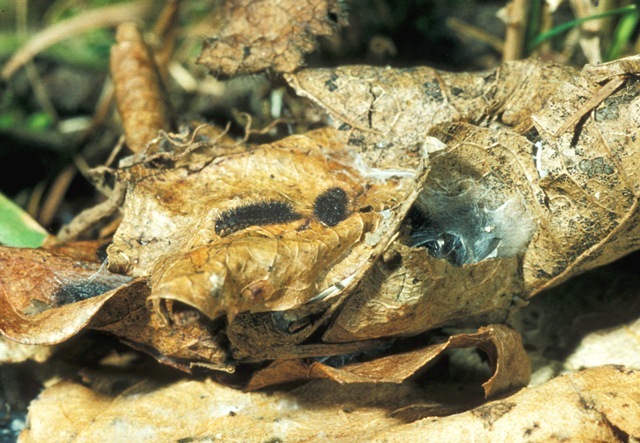 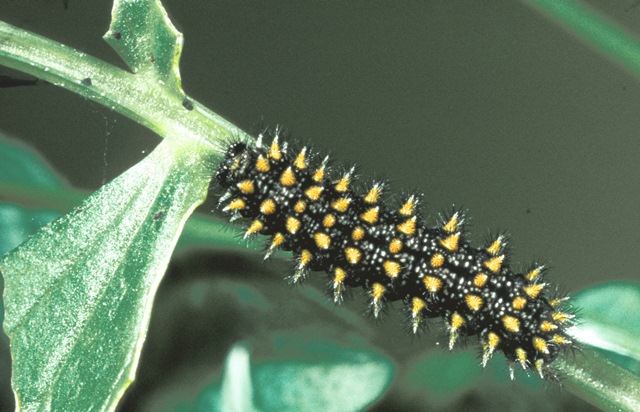
Photographs: Frits Bink ©.
Behaviour in space
From stay-at-home to migrant: stay-at-home, spatial requirement very modest.
Finding a mate: male patrols and has also a good chance to meet the female when nectaring.
Orientation in the landscape: tall herb vegetation in a gradient from grassland to wood or scrubland.
Oviposition: in clutches of 103 (48-160) eggs on the underside of a leaf of its host-plant.
Defence
Threats from other organisms: larva is armoured with bristles.
Threats from the environment: vulnerable, the species is restricted to humid environment.
Feeding habits
Adult: nectar of flowers from which nectar is easy to reach, such as of the own host-plant, valerian.
Larva: in summer the larva lives socially, in spring solitarily. In captivity the larvae accept also Valerianella and Centranthus ruber as food plants.
Larval foodplants
Plant species: Caprifoliaceae, Valeriana dioica, V. officinalis.
Journal
Rearing experiment based on specimens from Steigerwald, Markt Bibart, Germany:
24 July 1984: six females captured on a clearing in the forest.
29 July: eggs laid in batches of 195, 87, 85, 45 on Valeriana officinalis.
7 August: first eggs hatched.
9 August: last laid eggs hatched.
13 August: larvae end first instar constructed a big nest.
17 August: all larvae together in the nest.
10 September: all larvae in diapause, probably since 28 August.
Overwintered in a cool place, outside.
7 March 1985: taken indoors.
15 March: larvae basked but did not feed.
19 March: larvae preferred to stay near the new shoots of the Valeriana plant.
24 March: larvae end third instar, 8 mm in length.
10 April: first larva in last instar seen.
24 April: five pupae. There were 10 larvae in third instar which had entered a second diapause.
4 May: there were some fully grown larvae and pupae (total 38), four larvae which entered a second diapause and two dead.
14 May: two males appeared.
15 May: five more males hatched.
17 May: another three males hatched.
18 May: two females and five males hatched.
24 May: last pupae hatched.
Table 106-1. Results of dissections

Table 106-2. Collection and observation localities
B, Ethe, 240 m, 49° 36’ 25”N – 5° 35’ 50”E; 29 May 1966, 15 June 1980, 11 July 1984, 23 May 1985.
D, Steigerwald, 49° 39’N – 10° 23’E; 24 July 1984.
D, Lorch, 300m, 50° 02’ 05”N – 7° 47’ 56”E; 14 June 1985.
F, Dommartin-la-Montagne, 49° 01’ 51”N – 5° 36’ 53”E; 24 June 2006.
F, Lorraine, Thillot, 352 m, 49° 01’ 24”N – 5° 39’ 15”E; 25 June 2006.
S, Skåne, Kjuge, 56° 04’ 59”N – 14° 21’ 40”E; 24 June 1984.
Fig. 106-1. Melitaea diamina, phenogram adapted from Fichefet et al. 2008: 241.
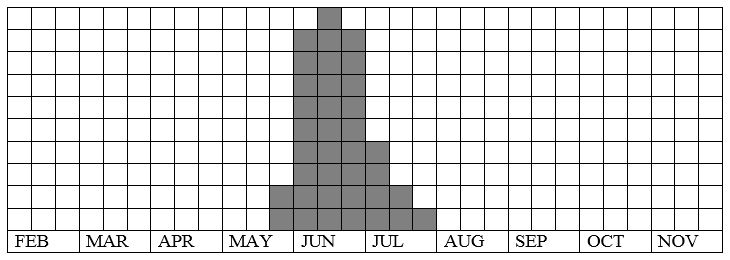
Fig. 106-2. Melitaea diamina, habitat characteristics.
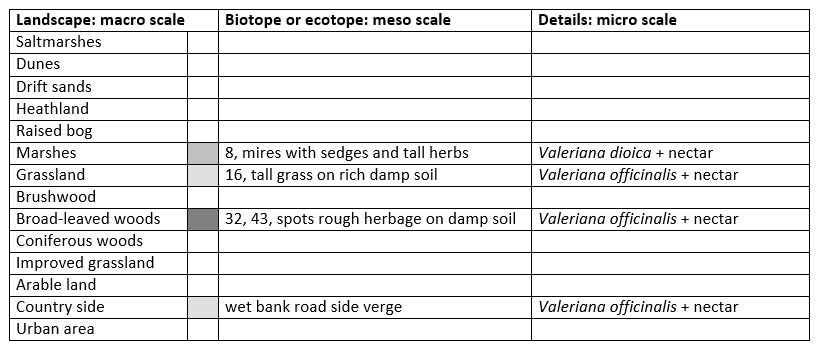
Fig. 106-3. Melitaea diamina, climate matrix, heat-sums 600 - 1800°d.
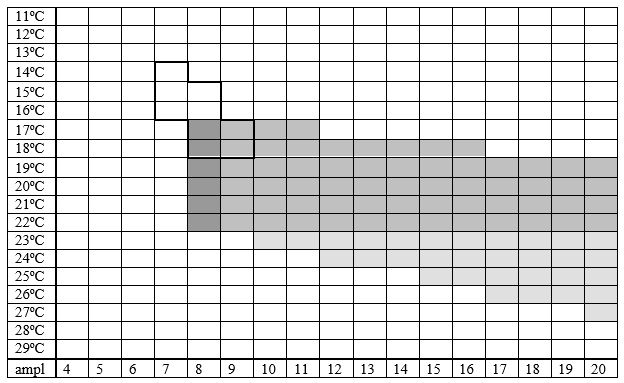
|










